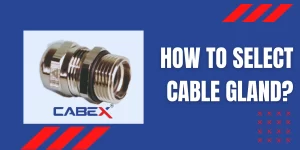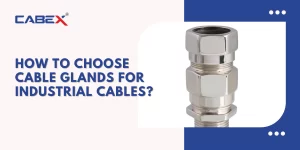Introduction
Differences between screened and sheath cables: In the world of cables and wiring, precision and understanding are paramount. Each component plays a crucial role in the transmission of power, data, or signals, and any variation can significantly impact performance. Two terms that often lead to confusion are “screened” and “sheath” cables. In this comprehensive exploration, we will unravel the intricacies of these cable types, highlighting their differences, applications, and the vital role they play in modern technology and infrastructure.
The Backbone of Connectivity: Cables in Modern Technology
Before we delve into the differences between screened and sheath cables, let’s establish a foundational understanding of the significance of cables in our interconnected world.
Cables as Lifelines: In an era driven by data, communication, and energy, cables serve as the lifelines that connect our devices, power our homes, and enable global communication. Whether it’s transmitting electricity, internet signals, or audio-visual data, cables are the unsung heroes behind our modern way of life.
Diverse Applications: Cables come in various forms and serve diverse applications. From electrical power cables that deliver electricity to homes and industries to data cables that facilitate high-speed internet and telecommunications, the world of cables is vast and multifaceted.
Reliability Matters: In critical applications, such as medical equipment, aerospace, or industrial automation, cable reliability is non-negotiable. A single cable failure can have far-reaching consequences, making it imperative to choose the right type of cable for the job.
With this understanding in mind, let’s delve into the core of our discussion: the difference between screened and sheath cables.
Read also: What is the Difference Between MV Cable and HV Cable?
Screened cables and sheath cables are two distinct types of cables used in various applications, each with its own specific purpose and characteristics. Here’s a summary of the key differences between screened and sheath cables:
Screened Cable:
- Purpose: Screened cables are designed primarily to protect against electromagnetic interference (EMI) and radiofrequency interference (RFI). They are used when the integrity of the signal or data transmission is crucial.
- Shielding: Screened cables have an additional layer of shielding, typically made of materials like aluminum foil or copper braid. This shielding surrounds the inner conductors or cores, creating a conductive barrier that intercepts and diverts external interference.
- Grounding: To maximize the effectiveness of the shielding, screened cables often require grounding. The shielding layer is connected to a ground point to dissipate any intercepted interference.
- Applications: Screened cables are commonly used in applications where signal integrity is paramount, such as aerospace, defense, medical equipment, and industrial automation.
Sheath Cable:
- Purpose: Sheath cables, also known as jacketed cables, are designed primarily to provide protection and insulation for the inner conductors. They safeguard the cable from physical damage, moisture, chemicals, and environmental elements.
- Outer Sheath: Sheath cables have an outer protective layer, often made of materials like PVC (polyvinyl chloride) or LSZH (low smoke zero halogen). This outer sheath serves as insulation and provides protection against external factors.
- Insulation: The sheath layer serves as an insulating barrier between the inner conductors and the external environment, preventing electrical leakage and ensuring safety.
- Applications: Sheath cables are versatile and find applications in a wide range of industries and scenarios, including building wiring, outdoor installations, industrial machinery, and more. They are chosen for their resistance to physical wear, moisture, and chemicals.
Screened Cables: Guarding Against Interference
Screened Cables Defined: A screened cable, often referred to as a shielded cable, is designed with an additional layer of shielding material that surrounds the inner conductors or cores. This shielding serves as a barrier, protecting the signal or power transmission from external electromagnetic interference (EMI) or radiofrequency interference (RFI).
Key Characteristics of Screened Cables:
- Shielding Layer: The distinguishing feature of a screened cable is the presence of a shielding layer, typically made of materials like aluminum foil or copper braid. This shield encases the inner cores, providing a conductive barrier.
- EMI/RFI Protection: Screened cables excel in applications where protection against electromagnetic or radiofrequency interference is critical. This shielding prevents external signals from corrupting the transmitted data or signal.
- Grounding: To maximize the effectiveness of the shielding, screened cables often require grounding. This means that the shielding layer is connected to a ground point to dissipate any intercepted interference.
Applications of Screened Cables:
Screened cables find applications in scenarios where signal integrity is paramount, such as:
- Aerospace and Defense: In aviation and military equipment, where reliable data transmission and minimal interference are vital.
- Medical Equipment: High-precision medical devices, including MRI machines and monitoring equipment.
- Industrial Automation: Automated manufacturing processes that require precise control signals.
Now, let’s transition to the other side of our exploration and understand sheath cables.
Sheath Cables: Protection and Insulation
Sheath Cables Defined: A sheath cable, also known as a jacketed cable, is designed with an outer protective layer, often made of materials like PVC (polyvinyl chloride) or LSZH (low smoke zero halogen). This outer sheath provides insulation, protection from physical damage, and environmental resistance.
Key Characteristics of Sheath Cables:
- Protective Outer Layer: Sheath cables feature an outer layer or sheath that encapsulates the inner cores or conductors. This sheath provides protection against moisture, chemicals, abrasion, and other physical elements.
- Insulation: The sheath serves as an insulating barrier between the inner conductors and the external environment, preventing electrical leakage and ensuring safety.
- Environmental Resistance: Sheath cables are designed to withstand specific environmental conditions, such as exposure to UV rays, extreme temperatures, or chemical exposure.
Applications of Sheath Cables:
Sheath cables are versatile and find applications in a wide range of industries and scenarios, including:
- Building Wiring: Electrical wiring in homes, offices, and industrial buildings often utilizes sheath cables to provide insulation and protection.
- Outdoor Installations: Sheath cables designed for outdoor use and commonly used in telecommunications, outdoor lighting, and infrastructure projects.
- Industrial Settings: Sheath cables are chosen for their resistance to chemicals and physical wear in industrial machinery and equipment.
With a clear understanding of both screened and sheath cables, it’s evident that each serves a distinct purpose and addresses unique challenges. Selecting the right cable type for a specific application is crucial to ensure optimal performance and reliability.
Choosing the Right Cable for Your Needs
The choice between screened and sheath cables hinges on the specific requirements of your application:
- Screened Cables: Opt for screened cables when your priority is protecting signal integrity from electromagnetic or radiofrequency interference. Common applications include aerospace, medical equipment, and industrial automation.
- Sheath Cables: Choose sheath cables when your focus is on environmental protection, insulation, and physical durability. Applications range from building wiring to outdoor installations and industrial settings.
Conclusion
In conclusion, understanding the difference between screened and sheath cables is fundamental to making informed decisions in various industries and applications. These cables, though different in their design and purpose, share the common goal of ensuring reliable connectivity and protection in our ever-connected world.
FAQ
1. Can a single cable be both screened and sheathed?
Answer : Yes, it is possible for a cable to have both screening and a protective outer sheath. Such cables are designed to provide both EMI/RFI protection and physical/environmental insulation.
2. What is the primary purpose of a screened cable?
Answer: The primary purpose of a screened cable is to protect against electromagnetic interference (EMI) and radiofrequency interference (RFI) to ensure the integrity of signal or data transmission.
3. In which industries or applications are screened cables commonly used?
Answer: Screened cables are commonly used in industries and applications where signal integrity is crucial, including aerospace, defense, medical equipment, and industrial automation.
4. What is the role of the outer sheath in sheath cables?
Answer: The outer sheath in sheath cables serves as an insulating barrier between the inner conductors and the external environment, preventing electrical leakage and ensuring safety.
5. In which industries or scenarios are sheath cables commonly used?
Answer: Sheath cables are versatile and find applications in a wide range of industries and scenarios, including building wiring, outdoor installations, industrial machinery, and more.






